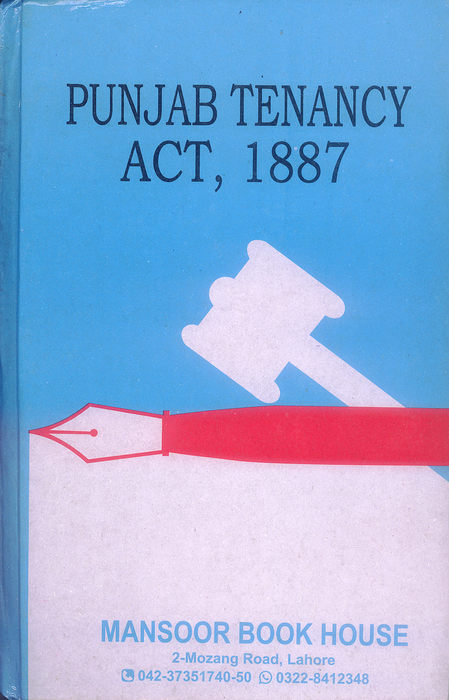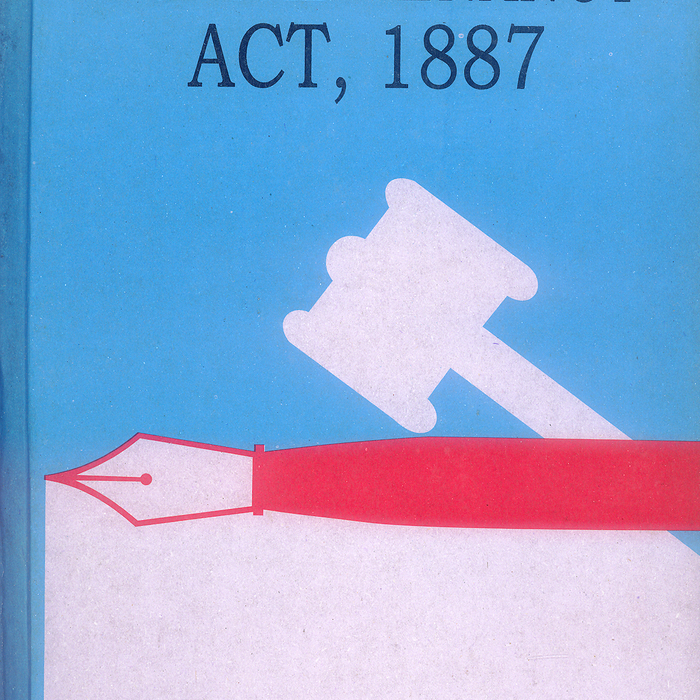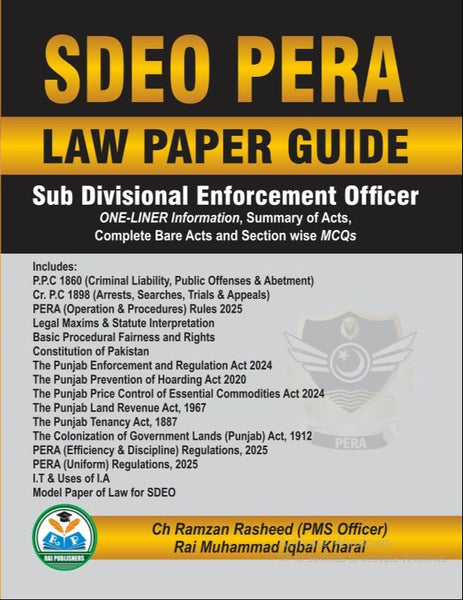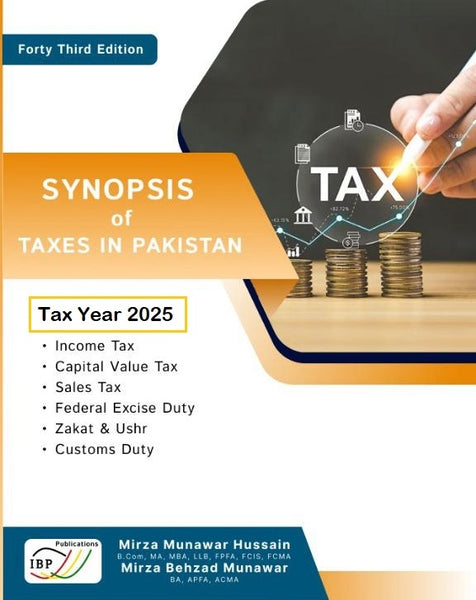The Punjab Tenancy Act 1887 Bare Act by OM Parkash Aggarawala
- Publisher: MANSOOR BOOK HOUSE
- Availability: In Stock
- SKU: 11400
- Number of Pages: 192
Rs.480.00
Rs.600.00
Tags: agricultural land management , agricultural land reform , agricultural land rights , agricultural law , bare act , bare acts for legal study , eviction , land reform laws , land tenancy , landlord-tenant relations , landownership , legal reference , Mian Umar Asad , non-occupancy tenants , occupancy tenants , OM Parkash Aggarawala , Punjab land laws , Punjab Tenancy Act 1887 , rent collection , rent disputes , subletting land , tenancy agreements , tenancy disputes , tenancy disputes resolution , tenancy law , tenancy law in Punjab , tenancy legislation. , tenancy transfers , tenant obligations , tenant rights
The Punjab Tenancy Act 1887 by OM Parkash Aggarawala is a significant piece of legislation in Pakistan that governs the rights and responsibilities of landowners and tenants in the province of Punjab. It lays down the legal framework for tenancy relationships, agricultural land rights, and the regulation of tenancy disputes. This bare act, as compiled by Mian Umar Asad, provides the unannotated text of the Act, which is essential for legal professionals, students, and anyone involved in land-related matters in Punjab.
Key Features:
-
Historical Context: The Act was enacted during British colonial rule, with the primary aim of regulating the relationships between landowners and tenants in Punjab. It seeks to address issues related to land tenancy, agricultural practices, and land disputes.
-
Regulation of Tenancy: The Act provides a legal framework for the tenancy of agricultural land in Punjab. It lays out provisions for the classification of tenants, rights of tenants, and the terms of agricultural tenancy agreements.
-
Tenant Rights and Obligations: The Act defines the rights of tenants in relation to land ownership, cultivation, and tenancy contracts. It also specifies the obligations of tenants, such as paying rent and maintaining the land.
-
Classification of Tenants: The Act classifies tenants into various categories based on their tenure and relationship with the landowner, such as occupancy tenants, non-occupancy tenants, and temporary tenants, with specific rights and duties for each group.
-
Rent and Landlord-Tenant Relations: The Act addresses the issues of rent collection, payment methods, and rent rates, providing a legal framework for disputes regarding rent and the relationship between landlords and tenants.
-
Transfer of Tenancy Rights: The Act allows for the transfer of tenancy rights under certain conditions and specifies the legal procedures for such transfers. It also covers the subletting of land and the rights of the tenant in such cases.
-
Eviction and Disputes: The Act outlines the procedures for eviction of tenants, including the grounds for eviction, such as non-payment of rent or violation of tenancy agreements. It also provides the mechanism for resolving tenancy disputes through courts or tribunals.
-
Agricultural Land Reforms: The Act contributes to the larger body of agricultural land reform laws in Pakistan, offering protections to tenants, particularly regarding issues of unfair eviction, excessive rent, and exploitation by landlords.
-
Application and Enforcement: The Act specifies the geographic scope of its application (Punjab), and the enforcement mechanisms for resolving disputes, including the appointment of officers to handle tenancy matters.
-
Bare Act Format: This book presents the complete, unannotated text of The Punjab Tenancy Act 1887, making it a direct reference for legal professionals who need to cite the law or need access to the exact wording of the Act without commentary or additional explanations.
Conclusion:
The Punjab Tenancy Act 1887 Bare Act by OM Parkash Aggarawala is an important resource for anyone engaged in legal practice, land management, or agricultural policy in Punjab. It provides the unaltered text of the law, which is crucial for understanding the legal rights and responsibilities related to land tenancy in the region. This bare act is particularly useful for students of law, legal practitioners, and landowners who need to navigate tenancy disputes or agreements.

























